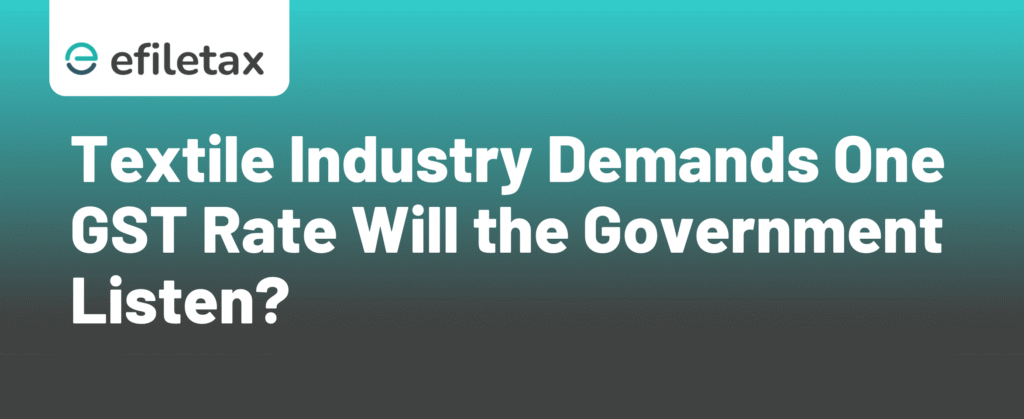
GST Rate Confusion Hits the Textile Sector
The textile industry seeks uniform GST rate to simplify tax compliance and reduce classification disputes. This fragmented structure has led to compliance hurdles, frequent notices, and cash flow mismatches for MSMEs and exporters.
Current GST Rates in the Textile Sector
| Item | GST Rate |
|---|---|
| Cotton fibre, yarn, fabric | 5% |
| made fibre, yarn | 18% |
| made fabric | 12% |
| Apparel up to ₹1,000 (per piece) | 5% |
| Apparel above ₹1,000 (per piece) | 12% |
| Apparel accessories, synthetic items | 12–18% |
Key Issue: Inputs like synthetic fibre are taxed at 18%, but the output (finished garments) is often taxed at 5% or 12%. This leads to inverted duty structure—where input tax is higher than output tax—resulting in blocked working capital.
Why the Industry Wants a Uniform GST Rate
1. Ease of Compliance
- Simplifies classification under HSN
- Reduces disputes with GST officers
- Makes return filing smoother
2. Eliminates Inverted Duty Refund Delays
- Avoids long refund cycles under Rule 89(5)
- Improves liquidity for small units
3. Boosts MSME Growth & Export Competitiveness
- MSMEs spend less on litigation and tax consultancy
- Lower cost of compliance increases profit margins
- Uniform rate helps in global price benchmarking
4. Reduces Scope for Discretionary Notices
- Uniform rates avoid interpretation-based tax demands
- Cuts down litigation across Advance Rulings and Tribunals
CBIC & GST Council Response So Far
- GST Council 47th Meeting (June 2022): Deferred a proposed 12% uniform rate after backlash from stakeholders.
- Circular No. 177/09/2022-GST: Clarified certain textile classifications, but many issues remain ambiguous.
- Current Status: No final decision yet on uniform rate; industry bodies like AEPC, CITI, and TEXPROCIL continue lobbying.
Expert View: Don’t Ignore Working Capital Drain
“Inverted duty structure is not just a refund problem—it’s a working capital killer. MSMEs in the textile chain end up borrowing to fund GST refunds. A flat 8% or 10% rate can solve this at scale.”
— CA Mahesh Iyer, GST Consultant & Advisor to Textile Exporters
What Can Taxpayers Expect?
If the textile industry seeks uniform GST rate continues to gain momentum, the GST Council may consider:
- A single slab (8%–10%) for fibres, yarn, and garments
- Phased implementation to avoid sudden rate shocks
- Auto-refund mechanisms for legacy ITC mismatches
Suggested Action Plan for MSMEs
- Review product HSNs and tax slabs carefully
- Maintain proper reconciliation for ITC on inputs
- Track refund timelines and escalate long-pending claims
- Consult a tax advisor to prepare for possible rate changes
FAQ on GST Rates for Textile Industry
Q1: Is cotton fabric still taxed at 5% GST?
Yes, as of July 2025, unstitched cotton fabric continues to attract 5% GST.
Q2: What is inverted duty structure in textile GST?
It occurs when input GST (e.g. 18% on fibre) is higher than output GST (e.g. 5% on finished goods), leading to refund claims.
Q3: Can the GST rate on textile garments change soon?
The GST Council is actively reviewing the demand. Any decision would be announced via notification.
Summary
The textile industry seeks uniform GST rate to tackle inverted duty structure, reduce litigation, and simplify compliance. Current rates vary from 5% to 18%, hurting MSMEs. The GST Council may consider a flat 8% or 10% rate.
Final Thoughts
The demand for a uniform GST rate is not about lower taxes, but simpler and fairer taxation. If implemented, it could ease compliance burden, improve working capital efficiency, and revive India’s struggling MSME textile base.